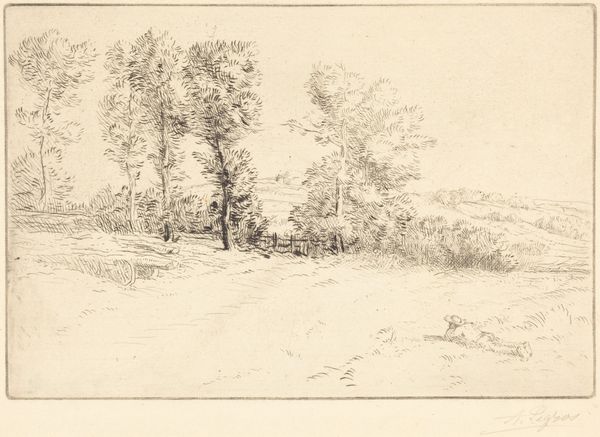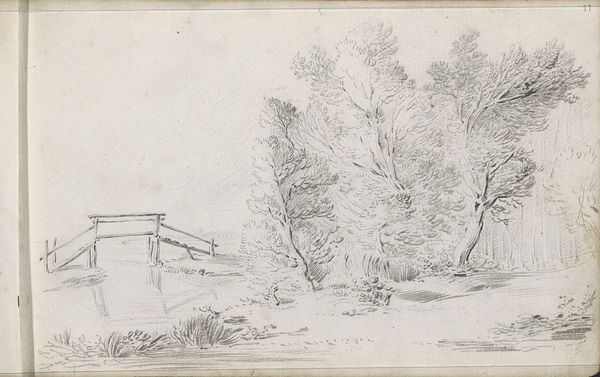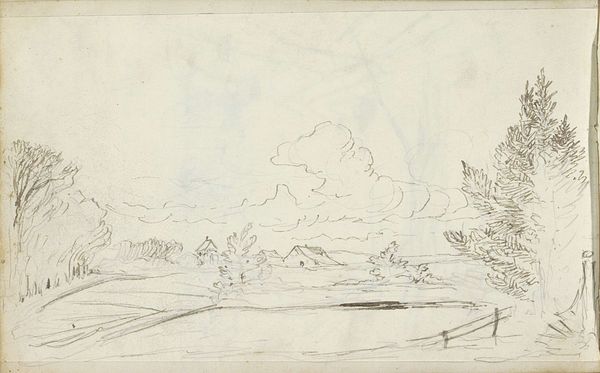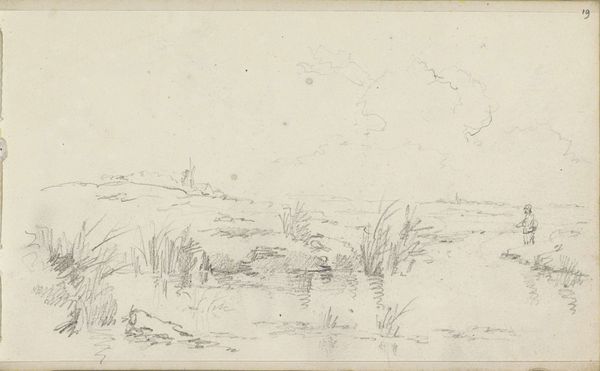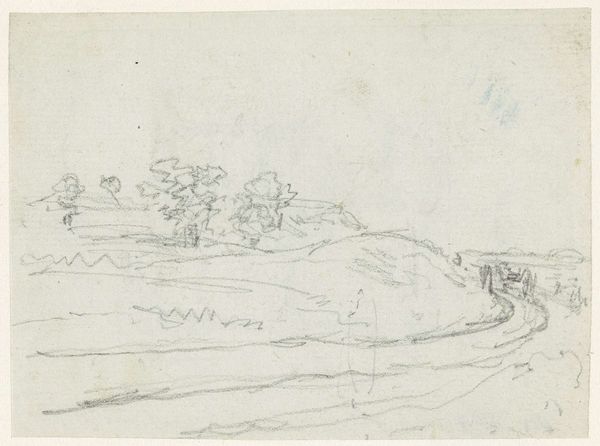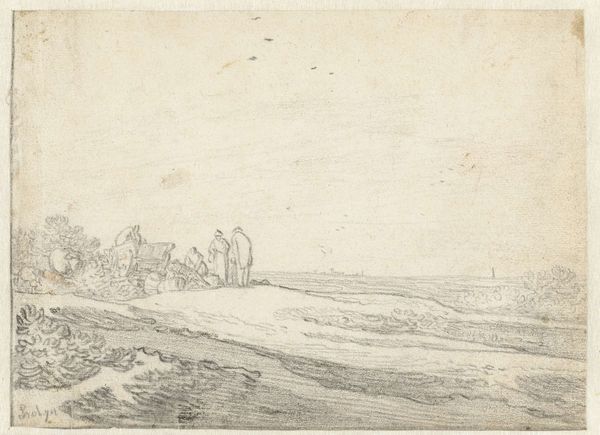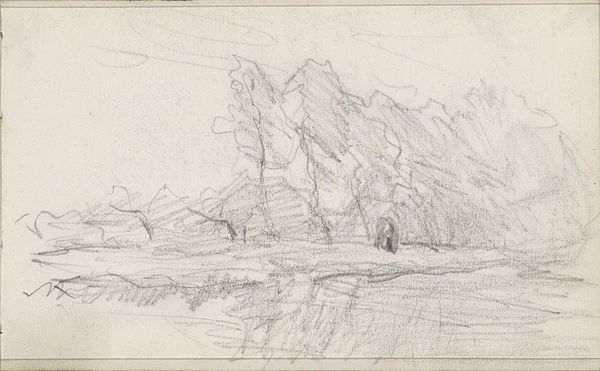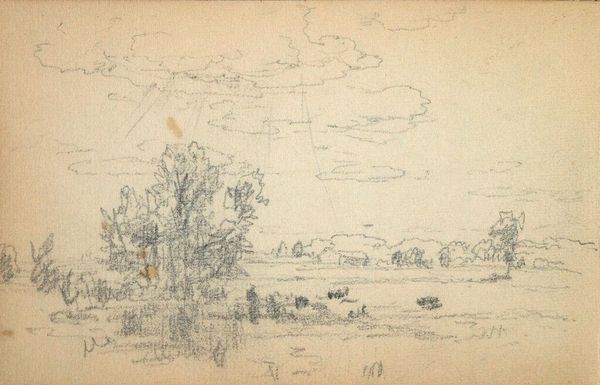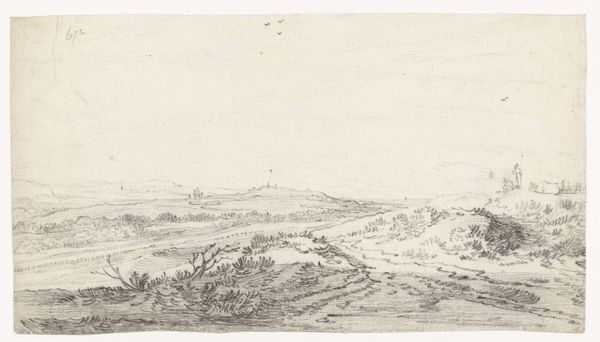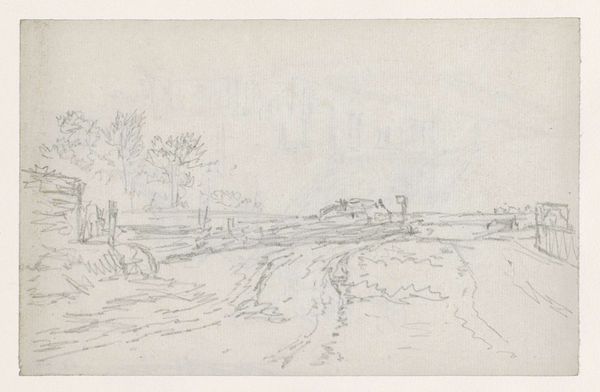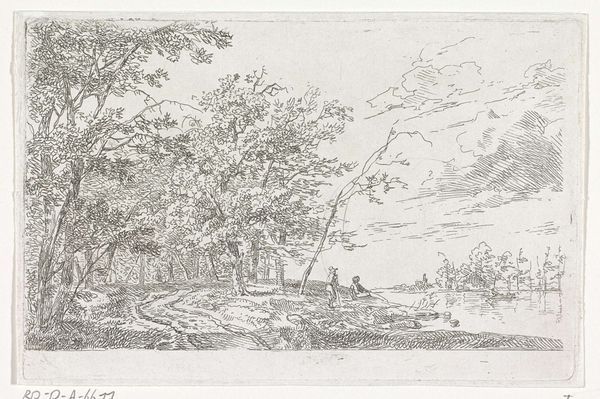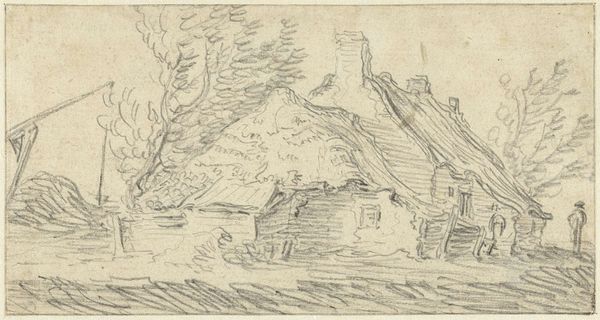
drawing, pencil
#
drawing
#
neoclacissism
#
pen sketch
#
landscape
#
pencil
#
academic-art
#
realism
Dimensions: height 189 mm, width 320 mm
Copyright: Rijks Museum: Open Domain
Curator: We’re looking at a pen and pencil drawing by Jan Hulswit entitled "Gezicht op de kerk te Heelsum", which loosely translates to “View of the Church in Heelsum.” It's estimated to have been created sometime between 1776 and 1822. Editor: It possesses such a stark, open quality! The sketch, primarily composed of pencil, renders the scene almost ghost-like. A quiet stillness pervades the composition, despite the visible structures and figures. Curator: The skeletal form indeed resonates; its lines delineate the scene—church spire, modest buildings, a rudimentary bridge with a solitary figure—revealing a moment captured during an era influenced by neoclassicism and burgeoning realism. The drawing, while a sketch, displays a clear commitment to accurate representation. Editor: Absolutely. Hulswit, in adopting the academic style of rendering, showcases the social landscape of the time; a society likely reverent yet observing through pragmatic eyes, much like how the church anchors the scene, it doesn't necessarily dominate it. Curator: The application of perspective and proportion constructs a convincing spatial experience, while the deliberate absence of vibrant color perhaps emphasizes a rational observation over sentimental dramatization. Note how the pencil is used to achieve subtle variations in tone. It’s evident in the foreground textures and distant cloud formations, articulating the relationships of object to sky. Editor: And what about that almost stoic figure on the bridge? Their placement directs our gaze toward the center of community and faith; however, it is more as if Hulswit invites one to contemplate these socio-cultural elements from a reserved, individual point. Curator: Precisely, an introspective experience. The composition's understated elegance belies Hulswit's capacity to capture a moment amidst evolving artistic sensibilities. Editor: A somber reminder of both personal experience and broader ideological transformations occurring within late 18th- and early 19th-century European societies. Curator: In its skeletal simplicity, a potent commentary on a period ripe with societal shifts and the artistic response to that era.
Comments
No comments
Be the first to comment and join the conversation on the ultimate creative platform.

